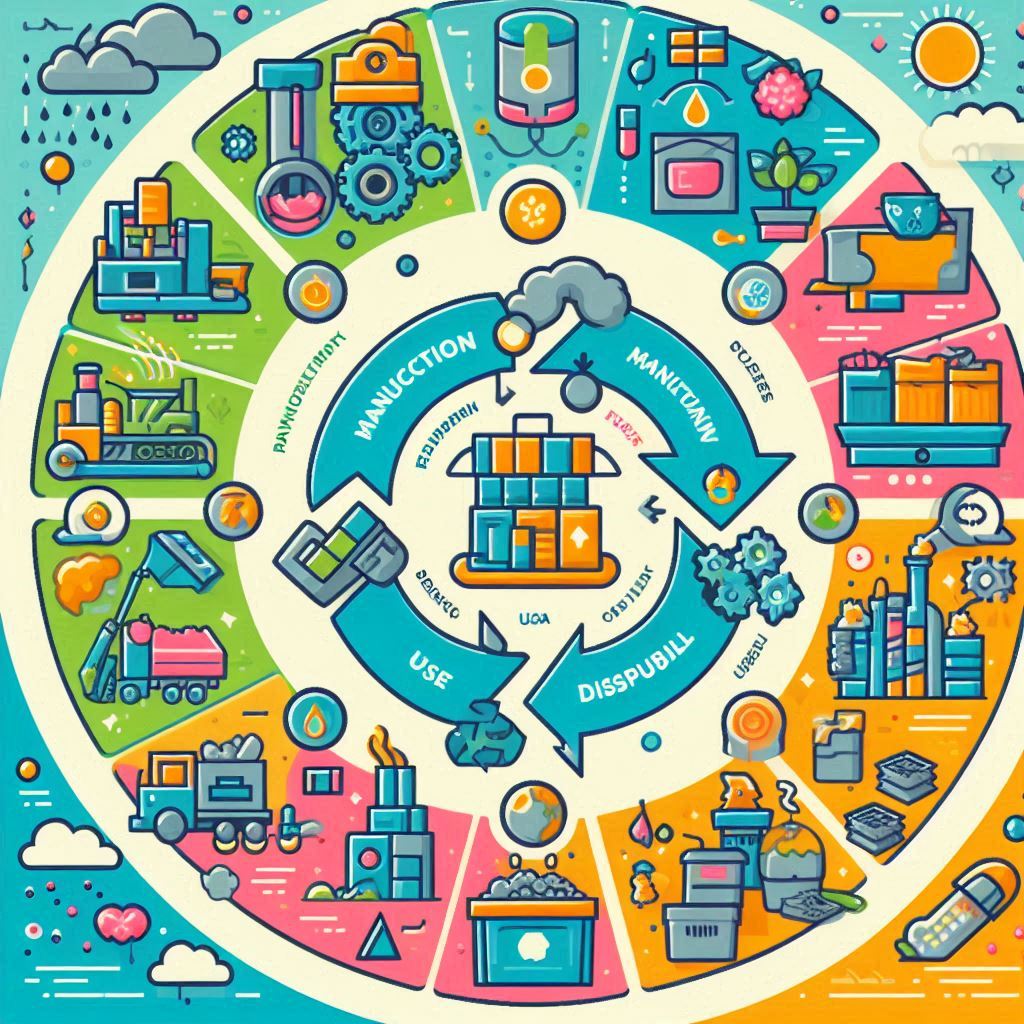Understanding and managing the different stages of a product’s lifecycle is crucial for maximizing its market performance and longevity. Product Lifecycle Management (PLM) encompasses strategies and practices that help businesses effectively navigate each phase, from initial development to eventual decline. This article explores the key stages of the product lifecycle and offers strategies for managing a product through each phase.
The Stages of the Product Lifecycle
- Development: The development stage involves conceptualizing, designing, and creating a new product. This phase includes market research, product design, prototype testing, and planning for production and launch.
- Introduction: During the introduction stage, the product is launched into the market. Marketing efforts are focused on building awareness and generating interest. Sales growth may be slow as the market begins to accept the new product.
- Growth: The growth stage is characterized by increasing sales and market acceptance. Marketing strategies shift to emphasize brand differentiation and market penetration. This phase often sees heightened competition and expanding distribution.
- Maturity: In the maturity stage, sales growth slows as the product reaches its peak market penetration. Competition is fierce, and companies may need to innovate or modify the product to maintain market share. Efficiency in production and distribution becomes critical.
- Decline: Eventually, the product enters the decline stage, where sales decrease due to market saturation, changing customer preferences, or technological advancements. Companies must decide whether to rejuvenate the product, discontinue it, or sell it to another company.
Strategies for Managing Each Stage
Development Stage
- Market Research: Conduct thorough market research to identify customer needs, preferences, and market gaps. This ensures the product meets market demands.
- Product Design and Testing: Develop prototypes and conduct rigorous testing to refine the product. Focus on quality, functionality, and user experience.
- Planning and Budgeting: Create a detailed project plan, including timelines, budgets, and resource allocation. Ensure alignment with overall business objectives.
Introduction Stage
- Marketing and Promotion: Launch a comprehensive marketing campaign to build awareness and generate interest. Use multiple channels, including social media, advertising, and public relations.
- Distribution Channels: Establish effective distribution channels to ensure product availability. Consider partnerships with retailers and online platforms.
- Customer Education: Provide information and support to help customers understand and use the product. Offer tutorials, user guides, and customer service.
Growth Stage
- Brand Differentiation: Highlight unique features and benefits to differentiate the product from competitors. Focus on building brand loyalty.
- Market Penetration: Expand market reach through targeted promotions, competitive pricing, and strategic partnerships.
- Quality Improvement: Continuously improve product quality based on customer feedback. Invest in enhancements and additional features.
Maturity Stage
- Product Innovation: Introduce new features, variations, or complementary products to maintain customer interest and extend the product’s lifecycle.
- Cost Management: Optimize production and distribution processes to reduce costs and improve margins. Consider economies of scale.
- Competitive Analysis: Monitor competitor activities and adjust strategies accordingly. Focus on maintaining market share.
Decline Stage
- Product Rejuvenation: Assess opportunities to refresh the product with updates or new marketing strategies. Rebranding or repurposing the product can also extend its lifecycle.
- Exit Strategy: Plan for an orderly exit if continuing the product is not viable. This could involve phasing out production, selling the product line, or redirecting resources to more profitable products.
- Customer Communication: Communicate transparently with customers about the product’s status. Offer support and alternatives if the product is discontinued.
FAQs
1. What is Product Lifecycle Management (PLM)?
Product Lifecycle Management (PLM) is the process of managing a product from its initial development through its decline. It involves strategies for optimizing each stage of the product lifecycle to maximize profitability and market performance.
2. Why is PLM important for businesses?
PLM is important because it helps businesses strategically manage their products, ensuring they meet market demands, remain competitive, and achieve long-term success. It also helps in resource allocation and decision-making.
3. How can companies extend the lifecycle of a product?
Companies can extend the lifecycle of a product by innovating, introducing new features, improving quality, expanding to new markets, and using effective marketing strategies to maintain customer interest.
4. What are some common challenges in managing a product lifecycle?
Common challenges include predicting market trends, managing competition, maintaining product quality, balancing costs, and making timely decisions regarding product updates or discontinuation.
5. Can all products follow the same lifecycle stages?
While most products follow a similar lifecycle pattern, the duration and intensity of each stage can vary widely depending on the product, industry, and market dynamics.
6. How can market research help in the development stage?
Market research helps identify customer needs, preferences, and market gaps, ensuring that the product being developed addresses real market demands and has a higher chance of success.
7. What strategies can be used to manage declining products?
Strategies for managing declining products include product rejuvenation, rebranding, finding new uses or markets, improving cost efficiency, and, if necessary, planning for an orderly exit from the market.
Managing a product through its various stages requires a strategic approach and continuous adaptation to market conditions. By implementing effective Product Lifecycle Management strategies, businesses can optimize their product’s performance and achieve sustained success.


Leave a Reply